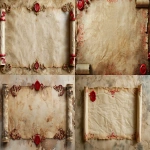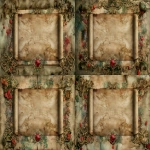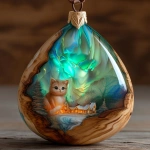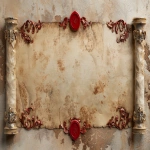Explore the Best AI Image Gallery

Beyond Pixels and Brushes: Wearable Tech as a Canvas for the Creative Soul
The realm of creativity has always been defined by innovation. From the first cave paintings to the digital revolution, artists have constantly sought new tools and mediums to express their vision. Today, wearable technology stands at the forefront of this evolution, blurring the lines between art, technology, and human experience.
Wearables: A New Dimension for Artistic Expression
Wearable tech transcends the traditional canvas, offering artists a dynamic and interactive platform. Imagine sculpting with light projected onto your body or composing music that responds to your movements. These possibilities are no longer confined to science fiction; they are becoming reality.
- Interactive Installations: Wearable sensors can capture data from participants bodies, translating it into visual or auditory elements in real-time. This creates immersive experiences where art becomes a collaborative dialogue between technology and the audience.
- Augmented Reality (AR) Art: AR overlays digital content onto the physical world, allowing artists to create installations that blend seamlessly with their surroundings. Imagine walking through a cityscape where buildings come alive with animated sculptures or interactive murals projected onto walls.
- Performance Art Reimagined: Wearable tech can enhance live performances by incorporating light displays, sound effects, and even virtual elements into the artists movements. This pushes the boundaries of traditional performance art, creating a more captivating and multi-sensory experience.
Potential Applications Across Creative Industries
The impact of wearable tech extends far beyond visual arts. Its revolutionizing various creative sectors:
- Fashion Design: Smart garments with embedded sensors can monitor body temperature, heart rate, and even mood, allowing designers to create clothes that adapt to the wearers needs and express their emotions.
- Music Production: Wearable controllers and instruments enable musicians to experiment with new sounds and control music production in innovative ways. Imagine composing a melody by simply moving your fingers or playing an instrument projected onto your hand.
- Filmmaking and Storytelling: Wearable cameras offer immersive perspectives, allowing filmmakers to capture stories from unique angles and create more engaging narratives for viewers.
Navigating the Ethical Landscape
As with any powerful technology, wearable tech in the creative sphere raises important ethical considerations:
- Privacy Concerns: Wearable sensors collect vast amounts of personal data. Its crucial to establish clear guidelines and ensure user consent for data collection and usage.
- Bias and Representation: AI algorithms used in wearable tech can perpetuate existing biases if not carefully designed and trained. Ensuring diverse representation in both data sets and development teams is essential to create inclusive and equitable creative tools.
- Accessibility:** Its important that wearable technology remains accessible to individuals with disabilities, ensuring everyone can participate in and benefit from these innovative artistic mediums.
Looking Ahead: The Future of Wearable Tech in Creativity
The convergence of wearable tech and creativity is still in its early stages, with immense potential for future development:
- Hyper-Personalization:** Imagine art that adapts to your individual preferences, responding to your emotions and creating unique experiences tailored just for you.
- Brain-Computer Interfaces (BCIs): BCIs could unlock entirely new forms of creative expression, allowing artists to translate their thoughts directly into art.
- Global Collaboration: Wearable tech can facilitate real-time collaboration between artists across geographical boundaries, breaking down physical barriers and fostering a more interconnected creative community.
Wearable technology is not merely replacing traditional tools; its expanding the very definition of creativity. By embracing these innovations while addressing ethical considerations, we can unlock a future where art becomes more immersive, interactive, and deeply connected to human experience.





](https://images.ai-img.art/thumbnails/150/7599c9e7507c77a975081d554947c9dea123e678a7ece42d30f571f639620598.webp)
](https://images.ai-img.art/thumbnails/150/031692dcf8fbf869092e8cea50f9411a45dadc1f189ea67b8dece8e02952a7e3.webp)




](https://images.ai-img.art/thumbnails/150/efd8a9ad06ef2c72e3378698ad5e592d3d2bf8eff85c25e75db7c9902c7be353.webp)
